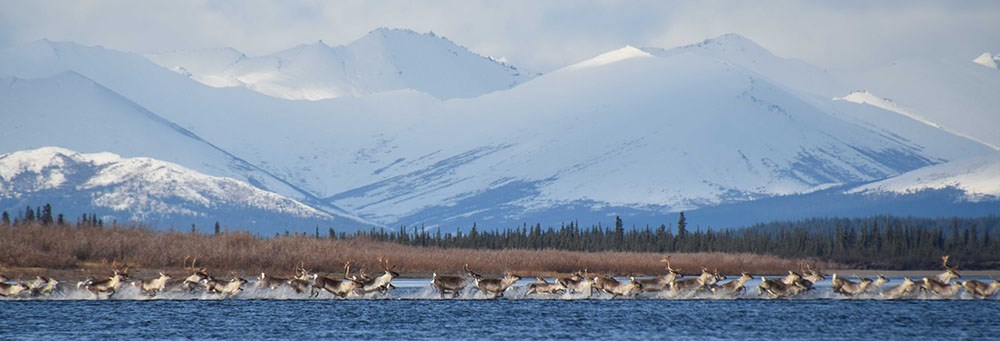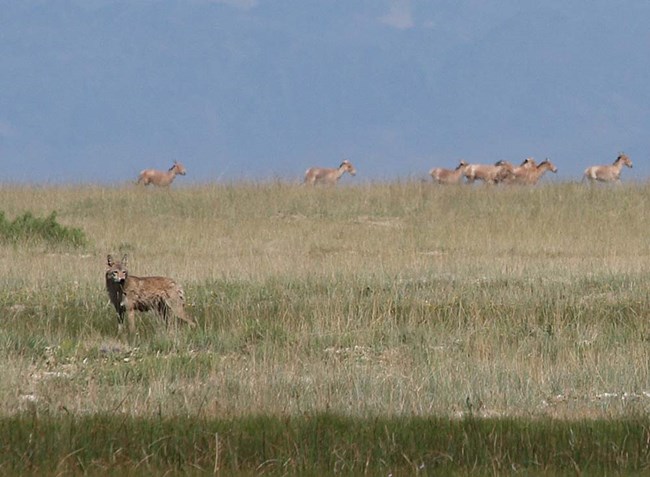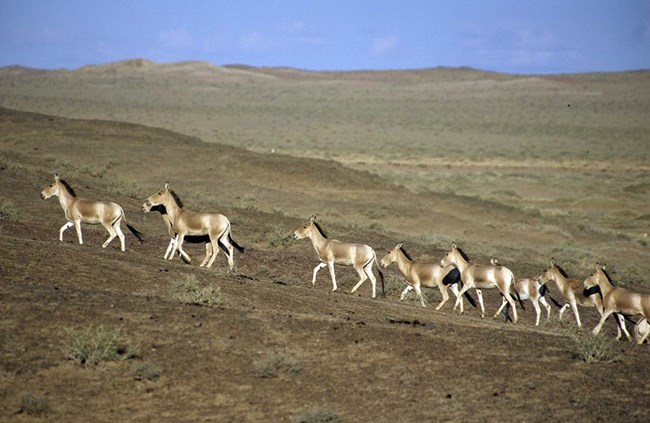Article
Who goes farthest of them all? The world’s longest wild animal terrestrial migrations and movements

NPS/Kyle Joly

Photo courtesy of Dejid Nandintsetseg
Caribou are often credited with the longest terrestrial migrations in the world, though without much scientific support. An international team of scientists, including Kyle Joly (National Park Service), Elie Gurarie (University of Maryland) and Mark Hebblewhite (University of Montana), gathered GPS collar data from around the world to address the question of which large terrestrial mammal migrates the farthest. Recognizing that not all mammals migrate, they also determined how far these mammals moved during the course of a year. The team’s findings have just been published in the journal Scientific Reports. Caribou, from numerous populations, were found to have the longest existing migrations in the world, with the round-trip distances exceeding 745 miles (1,200 km). Despite exhibiting the longest migrations in the world, a few species moved more than caribou in a year. Gray wolves and khulan (Mongolian wild ass) all moved more than caribou when considering their entire annual GPS track. A gray wolf from Mongolia captured the title of top terrestrial mover, having traveled 4,503 miles (7,247 km) in a year. To put this into perspective, it would be similar to you walking from Washington, DC to Los Angeles….and back…in a year.

Photo courtesy of Petra Kaczensky
The team discovered interesting patterns among these big movers. First, not only can predators keep up with their prey, they are often required to move much more in the course of their search for a meal. In Mongolia, gray wolves moved more than their prey, the khulan and wild camel. In Alaska, gray wolves moved more than caribou or moose. Second, small prey animals from the same region tended to move more than larger ones. For example, wildebeest moved more than zebras in the Serengeti, caribou more than moose in Alaska, and khulan more than wild camels in Mongolia. One possible explanation of this pattern is that large animals are capable of using lower quality food sources which are more abundant, and this allows them to move less overall. Lastly, higher movement rates by herbivores were associated with lower vegetative productivity. The less food that was available, the more they moved, likely to acquire sufficient resources. The greatest movements were found in areas of very low human disturbance, which highlights the effects of habitat fragmentation and human development.
Longest terrestrial migrations and movements around the world
Abstract
Long-distance terrestrial migrations are imperiled globally. We determined both round-trip migration distances (straight-line measurements between migratory end points) and total annual movement (sum of the distances between successive relocations over a year) for a suite of large mammals that had potential for long-distance movements to test which species displayed the longest of both. We found that caribou likely do exhibit the longest terrestrial migrations on the planet, but, over the course of a year, gray wolves move the most. Our results were consistent with the trophic-level-based hypothesis that predators would move more than their prey. Herbivores in low-productivity environments moved more than herbivores in more productive habitats. We also found that larger members of the same guild moved less than smaller members, supporting the "gastro-centric"’ hypothesis. A better understanding of migration and movements of large mammals should aid in their conservation by helping delineate conservation area boundaries and determine priority corridors for protection to preserve connectivity. The magnitude of the migrations and movements we documented should also provide guidance on the scale of conservation efforts required and assist conservation planning across agency and even national boundaries.
Joly, K. .... and others. 2019. Longest terrestrial migrations and movements around the world. Scientific Reports 10.1038/s41598-019-51884-5
Access the article in German.
